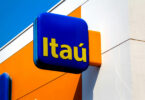When Hedera Hashgraph launched, it was one of the only public distributed ledger networks that used proprietary code. That’s about to change. The consensus algorithm was developed by Leemon Baird at Swirlds, which retained the rights to the intellectual property. Today Hedera announced that the Governing Council voted to acquire the IP from Swirlds. And it intends to open source the code. It didn’t share the amount paid.
We’ve asked if there’s additional intellectual property to which Swirlds retains rights but didn’t receive a response in time for publication. However, based on the company’s website, we believe the consensus algorithm was the main proprietary piece. Hedera is a Hashgraph which is a distributed ledger technology (DLT) but not a blockchain.
Hedera’s Governing Council consists of 25 substantial organizations, including the likes of Google, IBM, Nomura and Boeing. As such, it’s a public network in which anybody can participate, but only the Governing Council nodes have permission to write data to the network. This helps prevent forks in the network and means it’s not entirely permissionless.
“The vision has always been for Hedera to be a council-member driven organization, enabling the most decentralized governance and therefore broadest-reaching public network on the market,” said Scott Thiel, Partner at DLA Piper, a Governing Council member. “We believe now is the time to enable the fastest adoption possible of the Hedera network, to capitalize on growing demand for public DLT.”
At the same time, the Hedera CEO Mance Harmon and Chief Scientist and technical brains behind the project Dr. Leemon Baird will leave Hedera and return to Swirlds, which will be subcontracted by Hedera to carry out additional work.
Why change and why now?
Hedera has been relatively unusual compared to public blockchain projects, most of which have had this governance separation from day one. That’s often been part of an attempt to avoid the tokens being treated as securities and with the aim of being sufficiently decentralized. Notably, Ripple is currently in litigation with the US SEC on that topic.
There have been plenty of rumors, including from the Hedera community, about the Hedera network being a candidate for a central bank digital currency (CBDC). Open source software is one of the selection criteria often used by central banks. And for payment applications more broadly, several of the Governing Council members are in the financial sector, including Australian payment network eftpos, FIS, Korea’s Shinhan Bank, South Africa’s Standard Bank, Singapore’s DBS Bank and Nomura.
From a practical perspective, Hedera’s HBAR currently has a capitalization of almost $5 billion. Tokens retained by Hedera could potentially be used to pay Swirlds for the IP, although as mentioned, the figure was not disclosed. Harmon and Baird, who are behind Swirlds, likely also have token holdings in HBAR as founders.
“From day one, I have had a vision to enable ‘Shared Worlds’, where anyone can gather, collaborate, conduct commerce, and control their own online footprint,” said Baird, CTO of Swirlds and Co-Chair of the Hedera Council’s Technical Steering & Product Committee.
“With the completion of V1 of the network code, open sourcing of the hashgraph algorithm, and an engaged Council making key decisions about the future of the network, the foundation of that vision is complete. The next challenge is for the broader community to develop products and services beyond the Layer 1 protocol, to deliver products and services that enable others to leverage the power of the Layer 1 protocol to create value. Swirlds is the best place for us to work on that, while fostering an ecosystem where all can participate equally.”
Brett McDowell, who was previously the founding Executive Director of the FIDO Alliance, was elected as the first Chair of Hedera Hashgraph.






